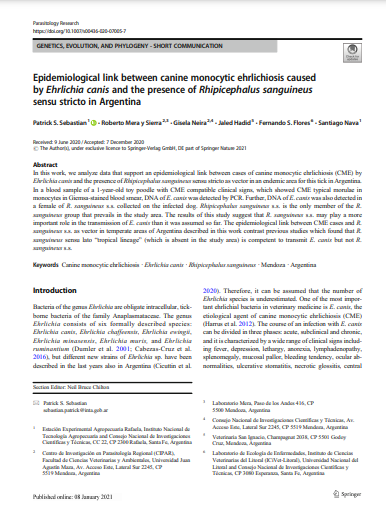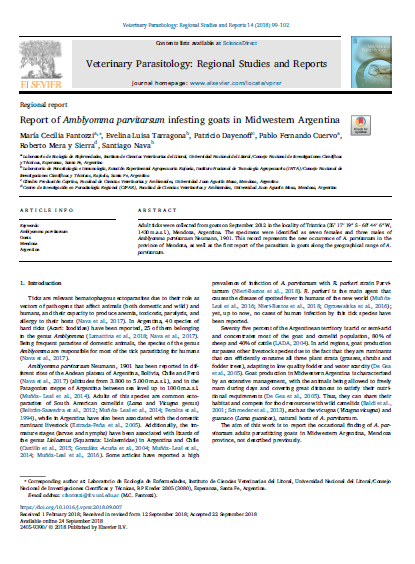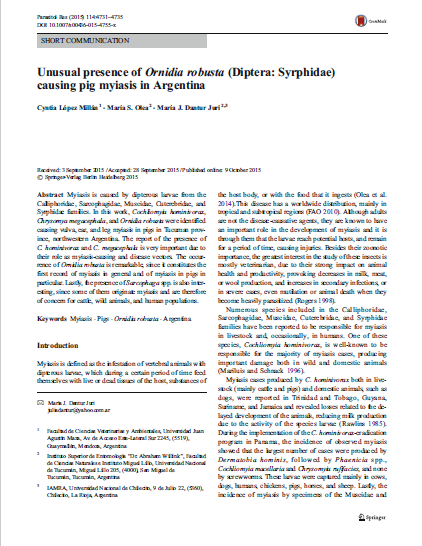Browsing Resultados de Investigación by Subject "Argentina"
Now showing items 1-4 of 4
-
Epidemiological link between canine monocytic ehrlichiosis caused by Ehrlichia canis and the presence of Rhipicephalus sanguineus sensu stricto in Argentina
(Parasitology Research Editorial, 2021-01-08)In this work, we analyze data that support an epidemiological link between cases of canine monocytic ehrlichiosis (CME) by Ehrlichia canis and the presence of Rhipicephalus sanguineus sensu stricto as vector in an endemic area for this tick in Argentina. In a blood sample of a 1-year-old toy poodle with CME compatible clinical signs, which showed CME typical morulae in monocytes in Giemsa-stained blood smear, DNA of E. canis was detected by PCR. Further, DNA of E. canis was also detected in a female of R. sanguineus s.s. collected on the infected dog. Rhipicephalus sanguineus s.s. is the only ... -
El mate adelgaza y tiene más propiedades
(2019-07-30)El reconocido docente e investigador de la Universidad Maza, Bioq. Rafael Pérez Elizalde estuvo dialogando sobre las propiedades de la yerba mate en el programa "La salud al día" de Radio LV10 (Mendoza). -
Report of Amblyomma parvitarsum infesting goats in Midwestern Argentina
(Comité editorial Veterinary Parasitology, 2018-09-24)Adult ticks were collected from goats on September 2012 in the locality of Trintrica (35° 17′ 19″ S - 68° 44′ 6″ W, 1430 m.a.s.l.), Mendoza, Argentina. The specimens were identified as seven females and three males of Amblyomma parvitarsum Neumann, 1901. This record represents the new occurrence of A. parvitarsum in the province of Mendoza, as well as the first report of the parasitism in goats along the geographical range of A. parvitarsum. -
Unusual presence of Ornidia robusta (Diptera: Syrphidae) causing pig myiasis in Argentina.
(Comité editorial Parasitology Research, 2015-10-09)Myiasis is caused by dipterous larvae from the Calliphoridae, Sarcophagidae, Muscidae, Cuterebridae, and Syrphidae families. In this work, Cochliomyia hominivorax, Chrysomya megacephala, and Ornidia robusta were identified causing vulva, ear, and leg myiasis in pigs in Tucuman province, northwestern Argentina. The report of the presence of C. hominivorax and C. megacephala is very important due to their role as myiasis-causing and disease vectors. The occurrence of Ornidia robusta is remarkable, since it constitutes the first record of myiasis in general and of myiasis in pigs in particular. ...













